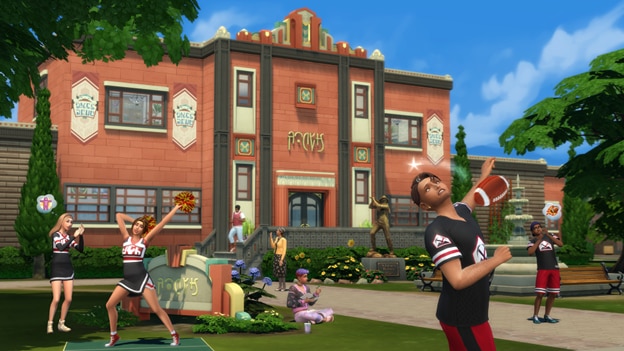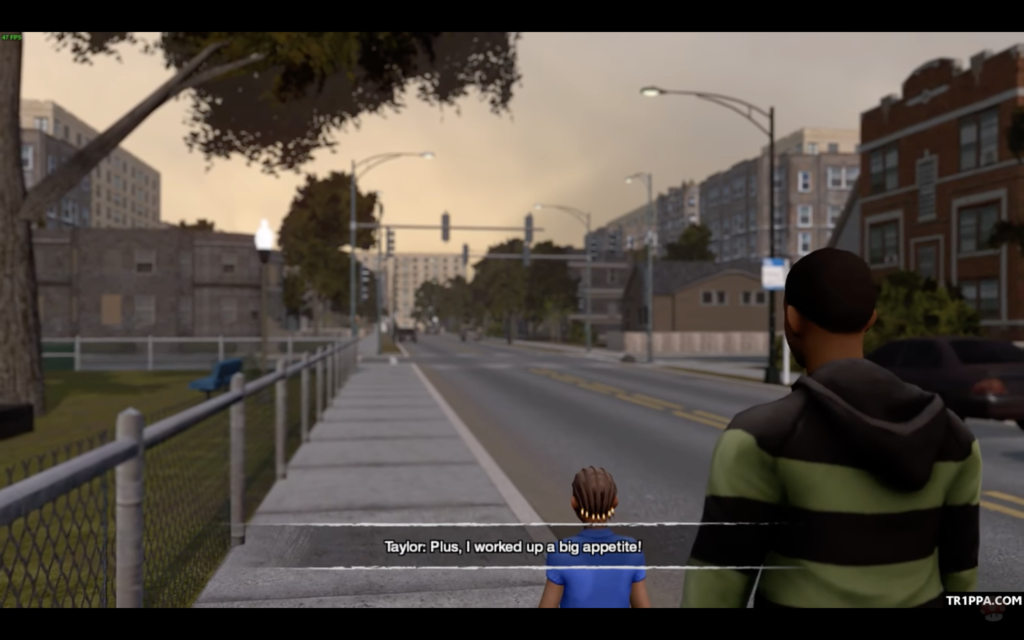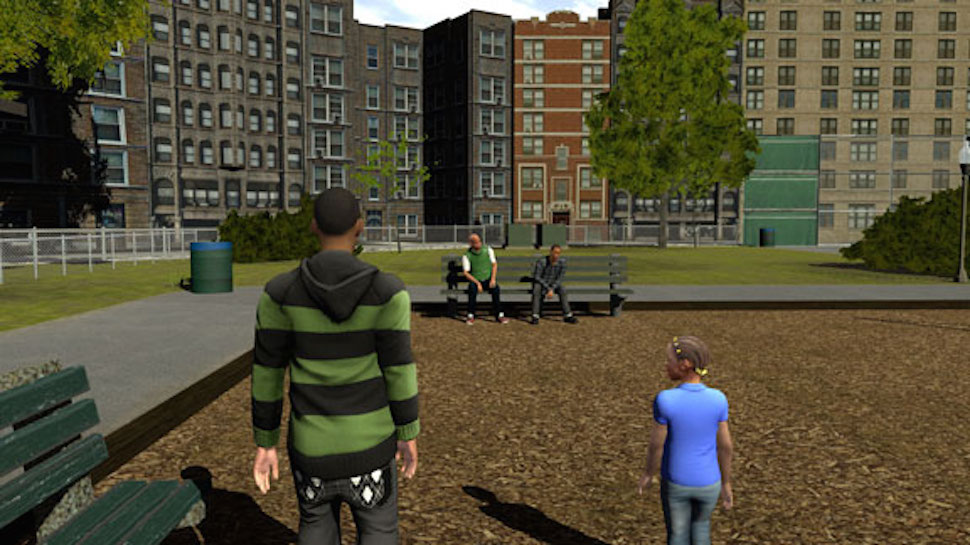First-person perspective role-playing, realistic modeling of local Chicago, a small social circle with no huge flush of people, dimmed school and security check, strong family attachment, and convos with friends – We Are Chicago creates a very immersive gaming experience with limited visuals. In spite of my previous experience with 1st-person RPG and general indifference towards educational topics, I was very drawn into Aeron’s layered struggles with sympathetic identification.
What especially caught my attention was the game’s realistic world setting and its special meanings (though perhaps to a large extent due to the game’s serious nature). Usually 1st PP PRG has the storyline split into two directions: one whose sole purpose of existence is largely devoted for fun, and the other for puzzle solving. The Sims is one piece of a game that is entertainment-oriented: mundane mundane objects are transformed into sites for fun. And with or without different modes, one is welcome to kick junks and creatures (humans) around, exploring ways of life that one may never actually get to live in the real world. There’re also other instances of puzzle-solving games wherein the player is transported into the body of a detective or a special survivor of some catastrophic event. The world surroundings are full of mysteries, puzzles, and shattered pieces of information – one needs to look closely to dig up traces and the world is a cocoon.

We Are Chicago intends neither of the two. It is not designed to either provoke fun or puzzle solving, and instead of trying to situate the player in an alternate reality, it just strives to absorb the majority of the players into a reality that coexists in the world but is different from our own, and intends to stimulate understanding, resonation, and concern. The world looks exactly like southern side Chicago. And the targets of danger are changed. Instead of focusing on the player-character who is expected to go through all the dangers in a game, the player’s biggest concern is in fact shifted towards other figures in the game – characters that one cannot control. I felt a sense of horror when I learned Aeron’s younger sister might be exposed to danger, and looking at her walking in front of Aeron on their way home, this detachment and the terror that follows becomes increasingly concerning. I feel a peculiar lack of control, following the game character who looks the most vulnerable and whom any normal human would try to protect not to plug in the identification with Aeron as her brother. This change of position in the targeting of danger by itself intensitifes the danger.

Then the junky look of humans in this game solidifies the vividness of the environment: the architecture in the game looks kind of more real than the rigid characters. When the player’s attention is, accordingly, directed towards the environment, the immediate realization that the neighborhood is not safe, that this world is not meant to be explored for fun or to be searched for evidence, feeds back to the player vulnerability. The player-character and his cherished family members are the one being hunted, but other unfriendly human beings/characters in this super realistic setting deepen the chilling. The environment’s much greater amount of details compared to the human characters now seems a trap: this vivid world is not built for the player to feel being in control, but rather designed to defeat.
Those interesting reversals and “disassociations” that We Are Chicago used, to change the subjects of the danger, to unequip the player’s ability to control, and to imitate a fundamental sense of insecurity and horror in living in a different part of a reality that we all share, really distinguishes itself from other 1st person RPG and has indeed stimulated in me real-world concerns.

